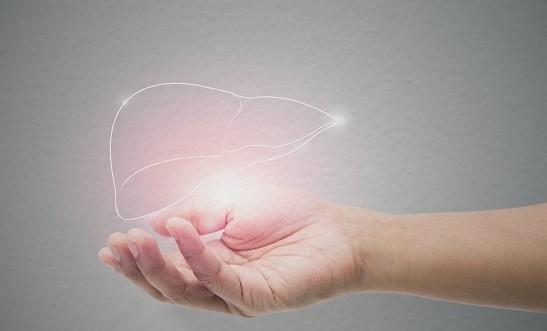Author: Li Tongzeng (Beijing You'an Hospital affiliated to Capital Medical University)
Some people like to use the blood fibrosis index, the value of liver elasticity test, etc. to determine whether cirrhosis has occurred.
In fact, this is indeed not comprehensive enough, clinically for the diagnosis of cirrhosis, in addition to looking at the past medical history, symptoms and signs, but also to do a series of tests to be able to use as the basis for diagnosis, only look at the individual values are not comprehensive enough, let's analyze it one by one.
1. Medical history
Cirrhosis is due to long-term liver damage on the basis of the development of repeated inflammatory necrosis and liver fibrosis if not treated, will develop into cirrhosis, the most common cause of cirrhosis in mainland China is viral hepatitis, mainly chronic hepatitis B and chronic hepatitis C, other causes of cirrhosis include alcoholic liver disease, autoimmune liver disease and other rare causes.
Therefore, people who have a previous basis of chronic liver disease should be screened regularly to determine whether cirrhosis has occurred.
Of course, there are also people who do not have a history of chronic liver disease, or have a history of chronic liver disease but the patient himself has no symptoms and has never checked the health of the liver, which requires clinical symptoms and examinations to diagnose cirrhosis.

Image source: Stand Cool Helo
2. Symptoms and signs
Patients with early cirrhosis can have no obvious symptoms, patients with decompensated liver function will generally have symptoms and signs such as fatigue, loss of appetite, palmar, spider angioma, etc., severe patients with jaundice caused by elevated bilirubin, patients with decompensated cirrhosis can be complicated by ascites, rupture and bleeding caused by varicose veins of the esophagus and gastric plantar caused by portal hypertension, hepatic encephalopathy, and decreased urine output caused by hepatic encephalopathy and hepatorenal syndrome.
At the end of cirrhosis, liver failure can occur, patients will have emaciation, a lot of ascites, hematemesis, oliguria, lower extremity edema, because of coagulation dysfunction skin petechiae ecchymosis, because of hepatic encephalopathy and calculation, directional force decline, confusion do not know the surrounding people, irritability, severe coma, until liver failure and death.
3. Laboratory inspection
Liver function, blood routine, coagulation function, blood biochemistry, and blood ammonia levels can all reflect the severity of cirrhosis, and if these indicators are normal or mildly abnormal, they indicate that they are in the compensatory period of cirrhosis, and if abnormalities occur, they may have entered the decompensation period.
If there is a decrease in leukocytes and platelets in the blood routine, an increase in hepatic function of aspartate aminotransferase (AST) exceeding alanine aminotransferase (ALT), an increase in bilirubin levels, hypoproteinemia, and decreased coagulation function, all indicate manifestations of decompensation of cirrhosis, and an increased risk of hepatic encephalopathy is indicated by elevated blood ammonia.
The more pronounced these indicators are, the more severe the cirrhosis tends to be.
4. Imaging examination
Ultrasound, liver transient elastography or CT, MRI to check the morphology of the liver, before the early appearance of cirrhosis, liver transient elastography technology can diagnose liver fibrosis, and after the appearance of cirrhosis, ultrasound and CT can see that the liver has a shrinkage, or the liver surface is obviously uneven, showing a very obvious serrated or wavy, the liver edge becomes very blunt, the liver parenchymal echo is unevenly enhanced, nodular, then it can be judged as cirrhosis.
Generally, such cirrhosis patients will also be accompanied by liver vein thinning, distortion, uneven thickness, imaging to see the spleen enlarged, portal vein widening, intraperitoneal seeing ascites often indicate cirrhosis decompensation period. Imaging tests can determine the severity of cirrhosis.
summary:
Clinicians combining the patient's medical history, symptoms, laboratory tests and imaging tests to diagnose cirrhosis is usually not difficult, symptoms, signs, laboratory tests and imaging results can also determine the severity of cirrhosis, early detection and early treatment can prevent patients with cirrhosis from developing to the stage of liver failure.
bibliography:
[1] Chinese Medical Association Hepatology Branch, Chinese Medical Association Infectious Diseases Branch. Guidelines for the prevention and treatment of chronic hepatitis B (2015 update)[J].Chinese Journal of Hepatology,2015,23(12):888-905.
*The content of this article is a popularization of health knowledge and cannot be used as a specific diagnosis and treatment recommendation, nor is it a substitute for face-to-face consultation by a practicing physician, for reference only.
*The copyright of this article belongs to Tencent Medical Code, unauthorized media reprinting is prohibited, and illegal reprinting will be investigated for legal responsibility according to law. Individuals are welcome to forward to the circle of friends.